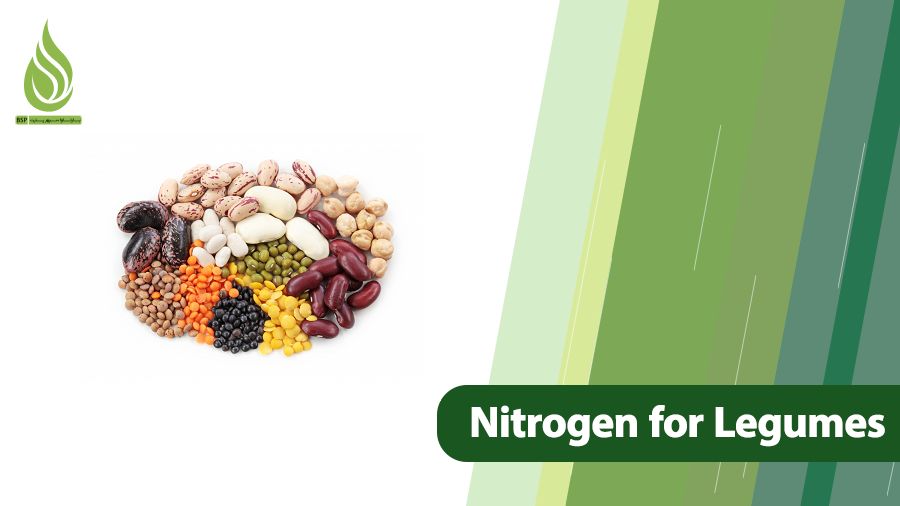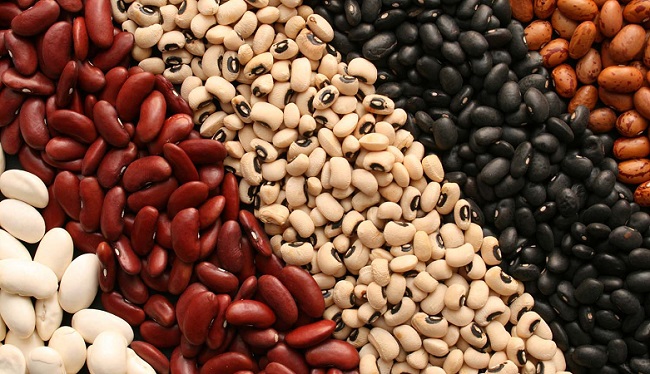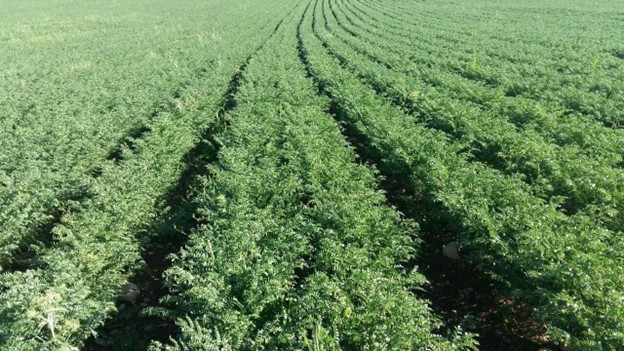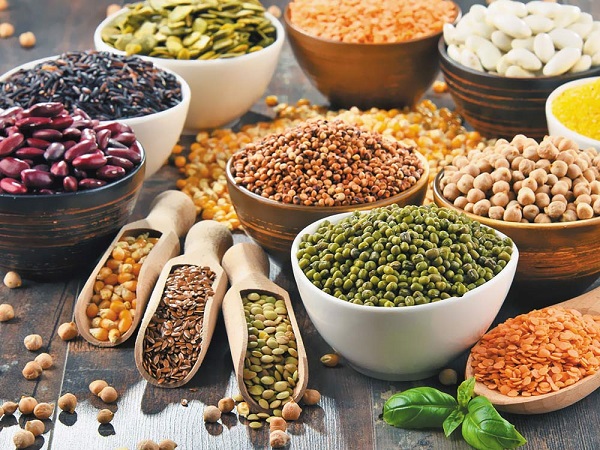
The Impact of Nitrogen Management on Boosting Protein Levels in Legumes (Lentils, Chickpeas, and Beans)
Nitrogen is a vital nutrient for plant growth, playing a central role in enhancing both the quantity and quality of crops, especially legumes. In legumes such as lentils, chickpeas, and beans, protein content is one of their most valuable nutritional attributes, making them essential staples in global diets. Effective nitrogen management can significantly increase the protein levels in these crops, improving their nutritional value and supporting food security on a planetary scale.
In this article, we’ll explore how nitrogen management influences protein enhancement in legumes, including lentils (Lens culinaris), chickpeas (Cicer arietinum), and beans (Phaseolus spp., among others). Legumes are consumed everywhere from the Middle East and South Asia, where they form dietary cornerstones, to North America and Europe, where they’re increasingly valued for plant-based protein alternatives. Legumes supply about one-third of the world’s dietary protein, with average daily consumption around 21 grams per person. This makes optimizing their protein content not just a farming issue but a key factor in malnutrition and sustainable agriculture.
How Nitrogen Influences Protein Boost in Legumes
Legumes like lentils, chickpeas, and beans are powerhouse sources of plant-based protein, providing affordable nutrition to billions. Nitrogen, a core building block of amino acids and proteins, directly drives protein synthesis in plants. Adequate nitrogen supply during growth stages ramps up protein concentration in the seeds, elevating their overall nutritional profile. Beyond protein, sufficient nitrogen promotes vegetative growth, pod formation, and seed yield, leading to healthier, more productive plants.
Nitrogen deficiency in legumes results in stunted seeds, lower yields, and diminished quality. Conversely, balanced nitrogen provision enhances seed weight and protein density. Research from the Ground Cover initiative by Australia’s Grains Research and Development Corporation shows that legumes can contribute at least 50 kilograms per hectare more mineral nitrogen to the soil than cereal crops, translating to economic benefits of over $200 per hectare at high fertilizer prices. This nitrogen boost directly correlates with higher protein yields. For instance, optimizing nitrogen levels can increase protein content by 10-20% in pulses, as protein is roughly 16% nitrogen by composition.
Legumes are integral to sustainable farming systems. In regions like the Northern Great Plains of the U.S. and Canada, pulse crops such as field peas and lentils contribute positively to the nitrogen economy, with faba beans showing even greater potential. Studies indicate that strategic nitrogen application not only elevates protein but also improves other nutritional aspects, like amino acid profiles. For example, common beans are rich in phenylalanine, often surpassing peas and lentils in certain amino acids, making them a versatile protein source.
Nitrogen is embedded in protein structures and is essential for photosynthesis. Plants lacking it exhibit weak growth and lower protein output. Applying nitrogen fertilizers during key growth phases can amplify protein levels, but it must be done judiciously to avoid environmental harm like nutrient runoff.

Legumes’ Natural Ability to Fix Nitrogen: A Built-In Advantage
One of the most fascinating aspects of legumes is their capacity to fix atmospheric nitrogen, essentially creating their own fertilizer. Legumes are one of the nitrogen fixing plants. Through symbiotic relationships with bacteria like Rhizobium in their root nodules, legumes convert inert nitrogen gas from the air into usable forms. This process, known as biological nitrogen fixation (BNF), is particularly pronounced in chickpeas, where root symbiosis thrives. Legumes obtain a portion of their nitrogen needs this way, provided sufficient bacteria are present in the soil. The remainder often comes from external fertilizers.
Legumes are often called “green manure” because they enrich the surrounding soil, making them ideal for crop rotation and restoring degraded lands. In global agriculture, this trait reduces reliance on synthetic fertilizers. For example, in the U.S., legumes like alfalfa and peas partner with root bacteria to fix nitrogen, contributing to soil health and reducing erosion. BNF by legumes accounts for about 90% of biologically fixed nitrogen in sustainable systems, bolstering crop yields and plant health.
Innovations are enhancing this natural process. Recent research highlights how unique bacterial strains could improve nitrogen fixation in lentils and chickpeas, leading to greater biomass and higher protein content. In semi-arid regions, modeling shows that minimal nitrogen fertilizer can optimize wheat yields following legumes, underscoring their rotational benefits. However, legumes still need starter nitrogen early on, as their fixation ramps up over time.
Timing Nitrogen Application for Maximum Protein Impact
Fertilizer programs for legumes allow nitrogen addition at specific intervals. Typically, it’s applied in two or three stages: pre-planting, during vegetative growth (around the 4-6 leaf stage), and sometimes during pod filling. The pre-planting phase is crucial for establishing strong roots. Later applications during seed development can boost protein, but potassium often takes precedence then to avoid imbalances.
Instead of a single heavy dose, gradual application throughout the season improves absorption and minimizes waste. This staged approach aligns with global best practices, where nitrogen enrichment has been shown to increase legume biomass by 30.9% and plant tissue nitrogen by 13.2% on average. In Florida’s Suwannee Valley, for instance, nitrogen management post-legume crops optimizes snap bean yields in sandy soils.
Over-application risks excessive vegetative growth at the expense of seeds, so precision is key. Environmental factors like rainfall influence timing, apply during low-sun periods like early morning or evening, followed by irrigation to aid uptake.

Effective Nitrogen Management Strategies in Legume Cultivation
Given nitrogen’s positive effects on yield and protein quality, farmers globally prioritize smart management. This boosts economic value and nutritional benefits while promoting sustainability. Management extends beyond fertilizers to holistic practices.
Boosting Microorganisms for Better Nitrogen Utilization
Microorganisms, especially nitrogen-fixing bacteria, are pivotal in legume nutrition. They convert atmospheric nitrogen into plant-available forms, enhancing soil nitrogen and protein quality. Seed inoculation with Rhizobium before planting is a top method, widely used in countries like the U.S. and Australia. Research from Clemson University has led to international databases tracking legume fixation, aiding global breeding efforts. This symbiosis can be disrupted by excess chemical fertilizers, so balancing is essential.
Optimizing Timing and Dosage of Nitrogen Fertilizers
As leguminous plants, legumes enrich soil nitrogen but require initial inputs. Fertilization should match soil conditions and crop type. Global studies emphasize applying during cooler times and irrigating afterward. In intercropping systems, legumes transfer nitrogen to companions, improving overall yields.
Soil Testing to Gauge True Nitrogen Needs
Fertilizers should match soil deficiencies—excess causes lush growth but poor yields, while deficiency stunts plants. Soil tests are standard worldwide, from Montana’s legume rotations reducing fertilizer needs to modeling BNF in grain legumes. Tests guide precise programs, preventing environmental issues like leaching.
Phased Fertilization for Enhanced Effectiveness
Divide required nitrogen (from soil tests) into 2-4 applications for better results. This mirrors natural uptake, reducing losses. In forage legumes, this maximizes nitrogen production for subsequent crops.
Blending Organic and Chemical Fertilizers
Combining organic sources (compost, manure, crop residues) with chemicals improves soil structure and microbial activity. Organics enhance water retention, while chemicals provide quick nitrogen. This hybrid approach is sustainable, as seen in cover cropping studies where legumes diversify rotations and boost microbial diversity. Legume residues offer more nitrogen than cereals due to higher content.
Adhering to Fertilizer Mixing Guidelines
Some combinations, like nitrogen with calcium, hinder absorption. Soil type and pH affect interactions, so tailor mixes carefully. In alkaline soils common in arid regions, adjustments are critical.
Adjusting Soil pH in Saline or Alkaline Areas
Saline, alkaline soils impede growth. Sulfur lowers pH, activating microbes and improving nutrient availability. Ideal pH for legumes is 6-7.5; above 7.5 reduces iron and manganese uptake. In Iran and similar regions, sulfur-based fertilizers normalize pH.

Selecting the Optimal Nitrogen Fertilizer for Legumes
Common options include urea, ammonium nitrate, and ammonium sulfate. In alkaline soils prevalent in many areas like the Middle East and parts of the U.S., ammonium sulfate is preferred for its sulfur content, which tempers pH and minimizes leaching. It’s effective in saline conditions too. Urea suits low-nitrogen soils but risks higher losses via volatilization, making it less ideal for saline soils. It’s better to know the exact difference between urea and ammonium sulfate fertilizers.
Global comparisons favor legume-sourced nitrogen over synthetic for ecological sustainability, with lower energy use and better integrity. In cereal-legume systems, root exudates and bacteria drive fixation, co-boosting yields.
Sustainability in Nitrogen Management
Legumes are key to reducing fertilizer dependency. In Europe and Asia, rotations with peas and beans cut nitrogen inputs for cereals. Africa’s smallholders benefit from enhanced fixation in common beans via companion planting. However, climate change poses challenges, with warming potentially altering fixation rates.
Sustainably, over-reliance on chemicals harms ecosystems, so integrating BNF is vital. Future tech, like engineered bacteria, could amplify protein yields without excess inputs. By managing nitrogen wisely, we can enhance legume protein, support global nutrition, and foster eco-friendly farming.